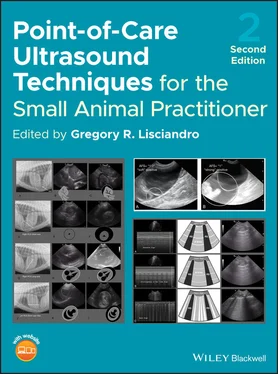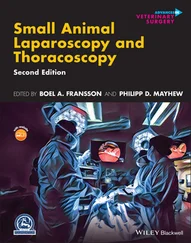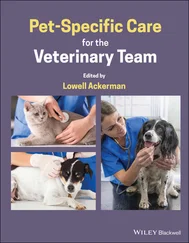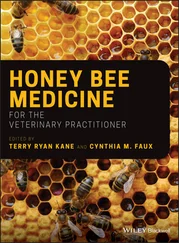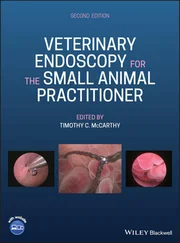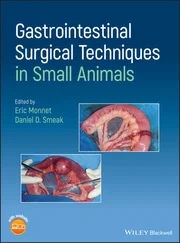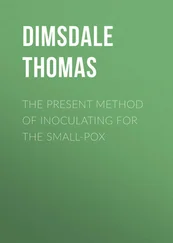18 Section IX: Ultrasound-Guided Procedures Chapter Fourty‐Three: POCUS: Ultrasound‐Guided Procedures – Abdominocentesis, Thoracocentesis, and Pericardiocentesis Introduction Pericardiocentesis Thoracocentesis Abdominocentesis Modified Ultrasound‐guided Diagnostic Peritoneal Lavage Pearls and Pitfalls, The Final Say References Further Reading Chapter Fourty‐Four: POCUS: Ultrasound‐Guided Lung and Thoracic Sampling Introduction Performing Ultrasound‐Guided Lung and Thoracic Sampling Two Methods of Ultrasound Guidance: Free‐hand and Using Probe Guides Building Skills on Phantoms Pearls and Pitfalls, The Final Say References Further Reading
19 Section X: Management Chapter Fourty‐Five: POCUS: Setting Up Successful POCUS and FAST Ultrasound Programs Introduction Proper Training Accessibility Communicating Value to Clients Use of Goal‐Directed Templates Quality Control Training Techniques Pearls and Pitfalls, The Final Say Reference Further Reading
20 Appendix I: Goal‐Directed Templates for Medical RecordsAFAST ® POCUS – Liver and Gallbladder POCUS Spleen POCUS Kidney POCUS Urinary Bladder POCUS Reproductive Female – Uterus POCUS Reproductive Dystocia TFAST ® Vet BLUE ®– Simple Version Vet BLUE ®– Detailed Version POCUS Echo (Heart) POCUS Pediatrics POCUS Eye Vet FAST‐ABCDE Global FAST ®(GFAST SM)
21 Appendix II: Abbreviations, Terminology and GlossaryAbbreviations and Acronyms Terminology and Glossary
22 Appendix III: Quick References of Normal Values and Rules of Thumb AFAST® Author’s Treatment and Monitoring Guidelines for Canine Anaphylaxis (AX) in All AFAST Fluid‐Positive Cases to Prevent and Treat AX‐related Heparin‐Induced Hemoabdomen POCUS Liver and Gallbladder POCUS Spleen POCUS Kidney POCUS Urinary Bladder POCUS Gastrointestinal and Pancreas POCUS Reproductive TFAST® Vet BLUE ® POCUS Heart POCUS Caudal Vena Cava POCUS Pediatrics POCUS Felines POCUS Exotic Companion Mammals VetFAST‐ABCDE Exam POCUS Marine Mammals Global FAST® References and Further Reading
23 Index
24 End User License Agreement
1 Chapter 1 Table 1.1. Degrees of echogenicity of commonly encountered structures.
2 Chapter 3 Table 3.1. Summary of common artifacts and examples.
3 Chapter 6 Table 6.1. Changes in methodology from FAST to AFAST. Table 6.2. Comparison of FAST and AFAST in dogs. Table 6.3. What clinical questions are answered using AFAST? Binary? Qualitat... Table 6.4. Abbreviations and terminology. As lengthy as the list seems, the a...
4 Chapter 7 Table 7.1. Questions answered during AFAST. Table 7.2. Summary of patient management guidelines for hemoabdomen and posit... Table 7.3. Flowchart providing general guidelines regarding the decision‐maki... Table 7.4. Possible sources of abdominal bleeding on AFAST views. Table 7.5. Rule‐outs for the finding of gallbladder wall edema in dogs and ca... Table 7.6. Reference values for the caudal vena cava (CVC) measured in longit... Table 7.7. The author's treatment and monitoring guidelines for canine anaphy... Table 7.8. Most common causes of pericardial effusion in dogs and cats. Table 7.9. AFAST and its target organ approach as a soft tissue screening tes...
5 Chapter 10Table 10.1. Causes of pyelectasia.
6 Chapter 15Table 15.1. Fetal ultrasonographic maturation – canine.Table 15.2. Fetal ultrasonographic maturation – feline.
7 Chapter 18Table 18.1. What clinical questions can be answered using TFAST? Binary? Qual...Table 18.2. Pneumothorax diagnostic algorithm using TFAST. Refer to the text ...Table 18.3. Using the author's TFAST PTX 1/3s Rule for location of the “lung ...Table 18.4. Findings at the CTS view using different ultrasound modalities.Table 18.5. Rule‐outs for the “step sign” of lung.Table 18.6. Accurate TFAST diagnosis of pericardial and pleural effusion.
8 Chapter 19Table 19.1. Normal mean echocardiographic values (cm) in dogs.Table 19.2. Normal ranges of echocardiographic values (cm) in cats.
9 Chapter 22Table 22.1. Clinical questions answered using Vet BLUE lung examination.
10 Chapter 23Table 23.1. Vet BLUE lung examination and the clinical questions it answers.Table 23.2. Vet BLUE algorithm for acute respiratory distress in dogs and cat...Table 23.3. Rule‐outs for Dry Lung All Views.Table 23.4. Algorithm for diffuse B‐lines. Algorithm for diffuse B‐lines an...Table 23.5. Template for Vet BLUE.
11 Chapter 25Table 25.1. Predisposing factors for aortic and venous thrombosis and thrombo...
12 Chapter 26Table 26.1. Reference values using allometric scaling with body weight (BW) f...
13 Chapter 27Table 27.1. Normal findings (see Figures 27.11 and 27.12).Table 27.2. Types of abnormal ultrasonographic findings and possible causes.Table 27.3. Intraocular bleeding.
14 Chapter 28Table 28.1. Guidelines for measurements of the ventricular system as currentl...
15 Chapter 29Table 29.1. Guidelines for measurements of the ventricular system as currentl...Table 29.2. Guidelines for measurements of the resistive index as currently a...
16 Chapter 30Table 30.1. Approaches to the forelimb, where on the forelimb analgesia/anest...
17 Chapter 31Table 31.1. Approach to the pelvic limb, where on the pelvic limb analgesia/a...
18 Chapter 32Table 32.1. Approach to the trunk, where on the trunk analgesia/anesthesia is...
19 Chapter 33Table 33.1. Approach to the neuroaxial nerve blocks, where analgesia/anesthes...
20 Chapter 36Table 36.1. Comparison of Global FAST and the RUSH (Rapid Ultrasound in Shock...Table 36.2. Global FAST for patient volume assessment and detecting treatable...Table 36.3. Absolute measurement suggested guidelines for maximum CVC height ...Table 36.4. Characterization of the CVC and hepatic veins for canines at the ...
21 Chapter 37Table 37.1. Ruling out your Hs and Ts. Use of the Global FAST approach for ra...Table 37.2. Causes of gallbladder wall edema in the acutely collapsed dog tha...Table 37.3. Detecting treatable forms of shock – using Global FAST to rule ou...Table 37.4. Use of the Global FAST approach for the rapid assessment and moni...
22 Chapter 38Table 38.1. VetFAST‐ABCDE abnormal findings.Table 38.2. Abnormal findings for categories of the VetFAST‐ABCDE exam in dif...
23 Chapter 39Table 39.1. Characterization of the caudal vena cava and hepatic veins.Table 39.2. Bleeding felines and decision making using the abdominal fluid sc...Table 39.3. Quick reference of normals and rules of thumb.
24 Chapter 40 Table 40.1. Ultrasound reference ranges a(some values may vary based on weight a...
25 Chapter 41Table 41.1. Performing AFAST on dolphins.
26 Chapter 42Table 42.1. Reptile body positioning for POCUS (Hochleithner and Holland 2014...Table 42.2. Transducer (probe) recommendations for reptile species (Hochleith...
1 Chapter 1 Figure 1.1. The premise of FAST ultrasound – anechoic triangulations are abn... Figure 1.2. The figure shows the ultrasound differences in B‐mode gray scale... Figure 1.3. This figure is similar to Figure 1.2 but with some of the gray s... Figure 1.4. This figure is unlabeled and labeled for contrast of what tissue... Figure 1.5. Ultrasound and different tissues and elements. Schematic that ti... Figure 1.6. Longitudinal (sagittal) planes and orientation. Make the screen ...
2 Chapter 2 Figure 2.1. Velocity (m/sec) of sound through common body tissues or substan... Figure 2.2. Acoustic impedance (106 kg/m2sec) of common body tissues or subs... Figure 2.3. Attenuation (db/cm/MHz) in common tissues. Attenuation of sound ...
3 Chapter 3 Figure 3.1. Dirty and clean shadowing. (A) "Dirty shadowing" created by air,... Figure 3.2. Edge shadowing artifact. (A) An edge shadowing artifact is seen ... Figure 3.3. Acoustic enhancement artifact. Because there is less attenuation... Figure 3.4. Mirror artifact. The gallbladder appearing to be on both sides o... Figure 3.5. Reverberation artifact. (A) Reverberation artifact, also known a... Figure 3.6. Pseudo B‐lines. The B‐line artifact begins at the lung's p... Figure 3.7. Sediment versus side‐lobe and slice‐thickness artifact....
Читать дальше
